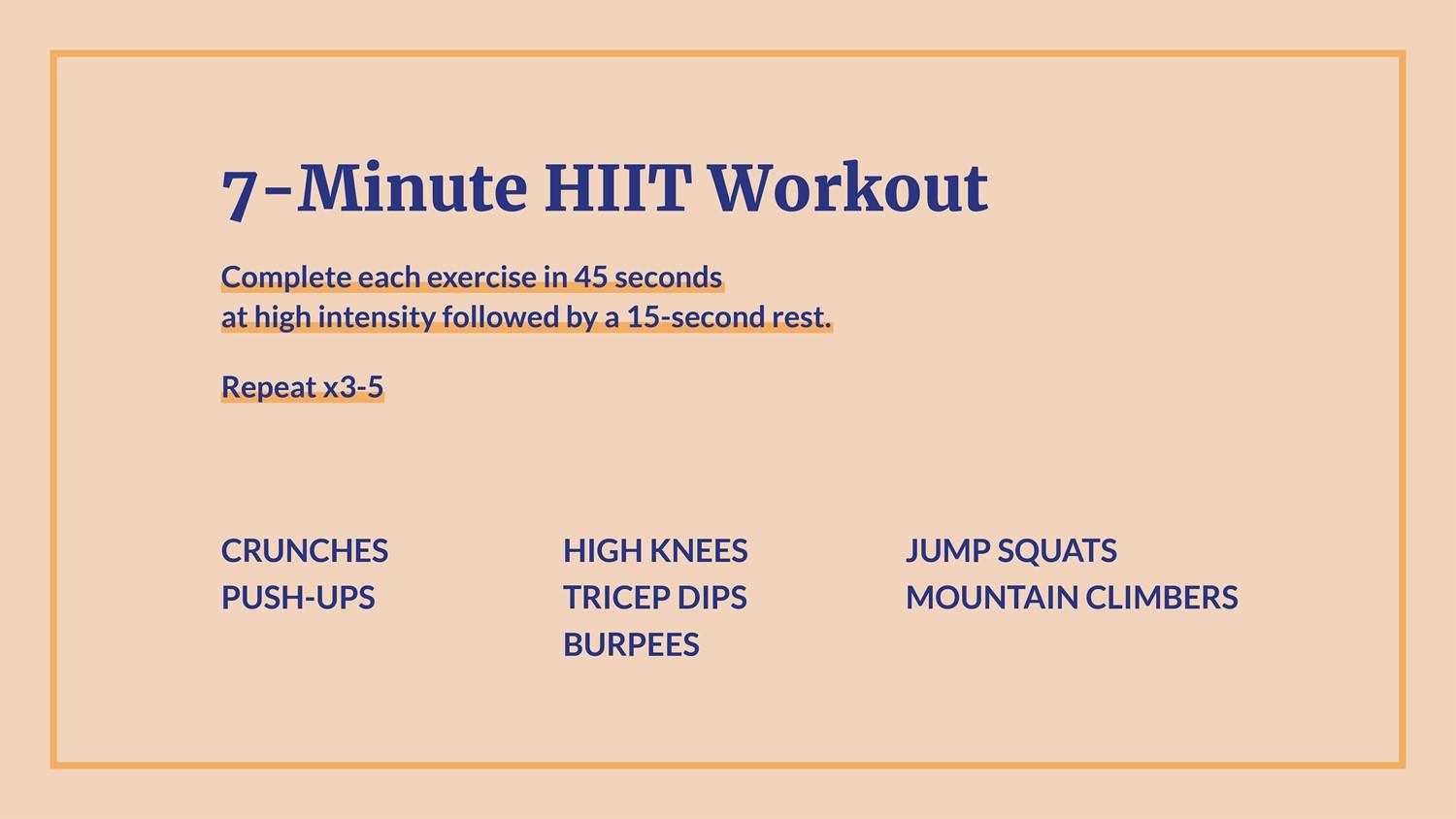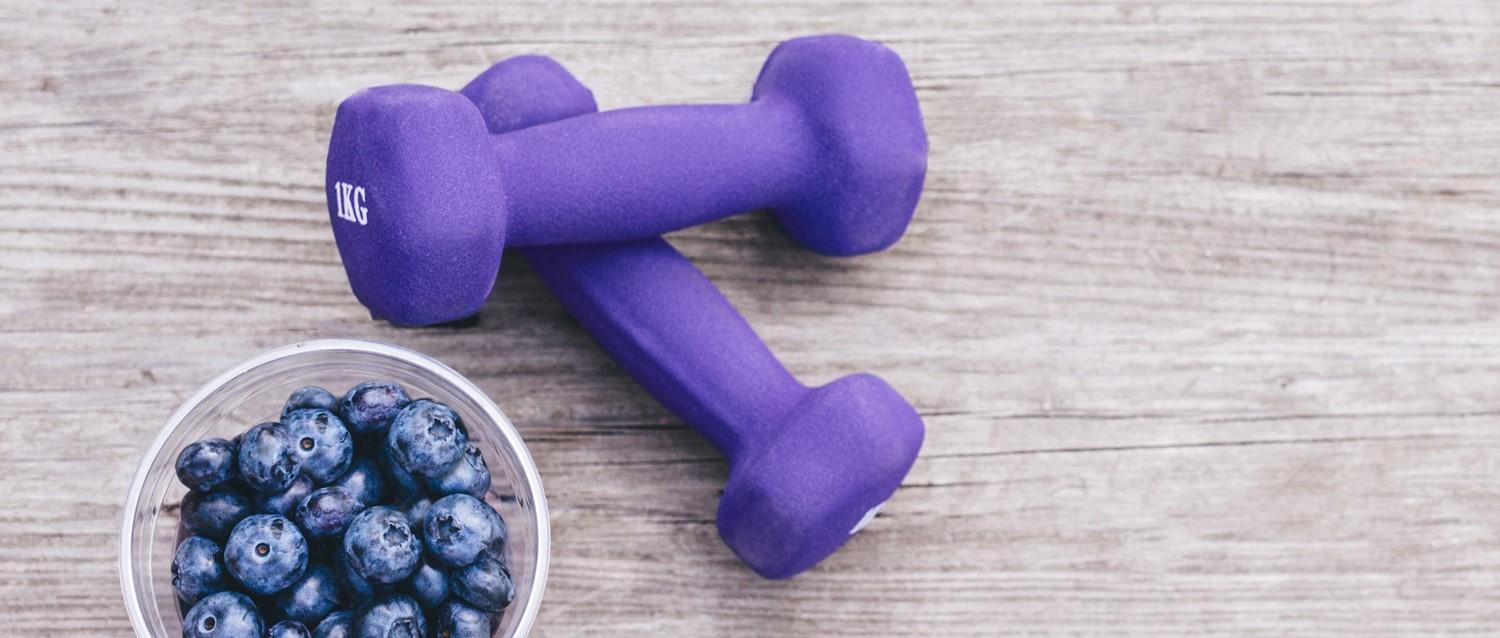
HIIT for weight loss: how does it compare to traditional cardio?
Peer reviewed by Dr Sarah Jarvis MBE, FRCGPLast updated by Gemma GrangeLast updated 20 Mar 2019
Meets Patient’s editorial guidelines
- DownloadDownload
- Share
- Language
- Discussion
For a lot of people, the main priority of going to the gym is to lose weight. But the thought of spending hours upon hours plodding away on a treadmill can often be off-putting. If only there was a way to get the same kind of results in short, sharp bursts. If this is something you find yourself asking, then trying HIIT for weight loss may be the answer. But how does it compare to more traditional cardio exercise?
In this article:
Continue reading below
What does HIIT stand for?
HIIT stands for high-intensity interval training, which (is a form of exercise where someone exerts themselves for short periods of time. For it to truly count as HIIT, you need to get your heart rate to at least 80% of your maximum heart rate (MHR) during the intense exercises.
A very rough and ready way of calculating your heart rate is 220 minus your age in years. However, a more accurate way of calculating your maximum heart rate is 208 minus (0.7 x your age in years).
Workouts are made up of 'work' and 'recovery' phases and can last between 10 and 60 minutes depending on the programme. HIIT can be done anywhere - in the gym, at home, in the park etc. One of the main appeals of HIIT is that it's so accessible and doesn't necessarily require an expensive gym membership or equipment.
What does a typical HIIT workout for weight loss look like?
HIIT exercises can vary, but here's an example of a typical workout:
HIIT Workout

Some of the benefits of HIIT workouts include:
Increased stamina
Improved strength
Fat burning
Increased natural metabolic rate after exercise, meaning you continue to burn calories after you've stopped exercising
Stress relief
Helping to regulate blood sugar
Each HIIT workout is different but aims to achieve the same results: quick and effective fat loss.
"HIIT has been around for years, but has had an upsurge in popularity as people who have less time available but want the same results have been looking for something without the time commitment and hard slog of going out for a long run/bike ride," explains Nuffield Health fitness manager, Dave Mercer.
It's important to know what you're letting yourself in for though. These types of exercises are not suitable for pregnant women, those suffering from a heart condition or those who struggle to recover quickly. It's also not a good idea to jump straight into a HIIT routine if you don't know how to do the basic exercises in the first place.
If exercising is new to you, consulting a personal trainer or doing some research online will help. There are plenty of videos on YouTube that will teach you proper form when performing these exercises in order to help prevent injury. Simply search for 'HIIT for beginners' and you'll be met with a wide range of resources.
Continue reading below
Variety is the spice of life
When considering HIIT for weight loss, all those numbers around MHR and timings may seem daunting, especially when the exercises may be different each time. But keeping your exercise routine varied could be the solution to keeping you more engaged with your workouts.
"Varied workouts keep the body guessing," says Mercer. "We want to try and adapt our workouts as we get stronger and fitter otherwise we will never hit our targets."
"Four areas to look at adjusting as you exercise are frequency, intensity, time, and type. By adjusting these every 4-6 weeks, your workout will move in the right direction. If this isn’t modified then your body will reach a plateau."
Low-intensity interval training (LIIT) is also a viable option, particularly for those days where your body may need to take it a little easier or for those just starting out. LIIT workouts consist of periods of exercise and periods of rest, but the impact during exercises is significantly reduced. In essence, it's HIIT but with no jumping or running.
In fact, if done correctly, LIIT can be just as effective as HIIT for weight loss.
Whatever the intensity, there's no point charging into a bunch of different workouts that you've never tried before, only to end up discouraged or injured. Try out some different things and see what works best for you.
"The most important thing is to stay within your limits. If you are not sure how far to push yourself, make sure you seek professional advice," says Mercer.
Cardio for weight loss
Celebrity fitness trainer Jillian Michaels described cardio as the least efficient form of exercise for weight loss "because it is not metabolic, meaning it doesn't cause the body to continue to burn calories post workout". Research also suggests High-intensity interval training (HIIT) will result in a greater reduction of body fat, compared to traditional exercise.
Cardio is defined as a steady-state exercise where your heart rate is raised above 50% of your MHR for an extended period of time. Examples of this could be running, jogging, cycling or jumping rope.
With the popularity of HIIT for weight loss on the rise, steady-state cardio may have seen a drop in recent years.
But that doesn't mean it isn't important to our health. Cardio has been proven to greatly help reduce cardiovascular diseases by aiding weight loss and lowering blood pressure.
Some other benefits include:
Improved heart health.
Increased fitness and maximum oxygen intake.
Calorie burning.
A reduced risk of metabolic diseases.
As with any exercise, it's important to find something that you like. Killing yourself on a spinning bike each week may burn lots of calories but won't do you any good if you hate every second of it. Why not try something you've never done before, like running? Setting a realistic goal such as doing a 10k in a few months time will bring some purpose to your cardio workouts. Apps like Public Health England's Couch to 5k can help to eventually achieve this.
Continue reading below
The final result
So it seems both methods of exercise have their benefits to improve our overall health. It's primarily based on what your preferences are and what goals you want to achieve. Looking to burn lots of calories in one go and improve your stamina? Try cardio. Short on time and need some variety? Try HIIT.
"While I train in both ways, HIIT gives me greater opportunity to make variations and to include some strength movements. If I am short on time I would always go with a HIIT workout to get the highest possible post workout endorphins," Mercer concludes.
Patient picks for Exercise and physical activity

Healthy living
How to keep kids active over the summer
Summer is the perfect time for children to relax and reboot after a busy school schedule. However, as much as they might look forward to gaming or hanging out with friends, it's still important to keep your kids active during this break.
by Victoria Raw

Healthy living
Should you exercise if you have a chronic illness?
Doctors and nurses are always banging on about the benefits of exercise. But sometimes, they’re actively telling you to avoid some exercise on the basis that it can do more harm than good! Read on to find out about some of the special situations where exercise comes with a C for caution.
by Dr Sarah Jarvis MBE, FRCGP
Continue reading below
Article history
The information on this page is peer reviewed by qualified clinicians.
20 Mar 2019 | Latest version

Ask, share, connect.
Browse discussions, ask questions, and share experiences across hundreds of health topics.

Feeling unwell?
Assess your symptoms online for free
Sign up to the Patient newsletter
Your weekly dose of clear, trustworthy health advice - written to help you feel informed, confident and in control.
By subscribing you accept our Privacy Policy. You can unsubscribe at any time. We never sell your data.